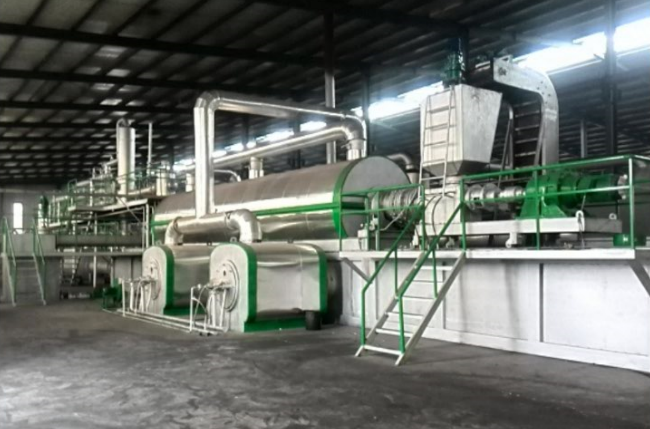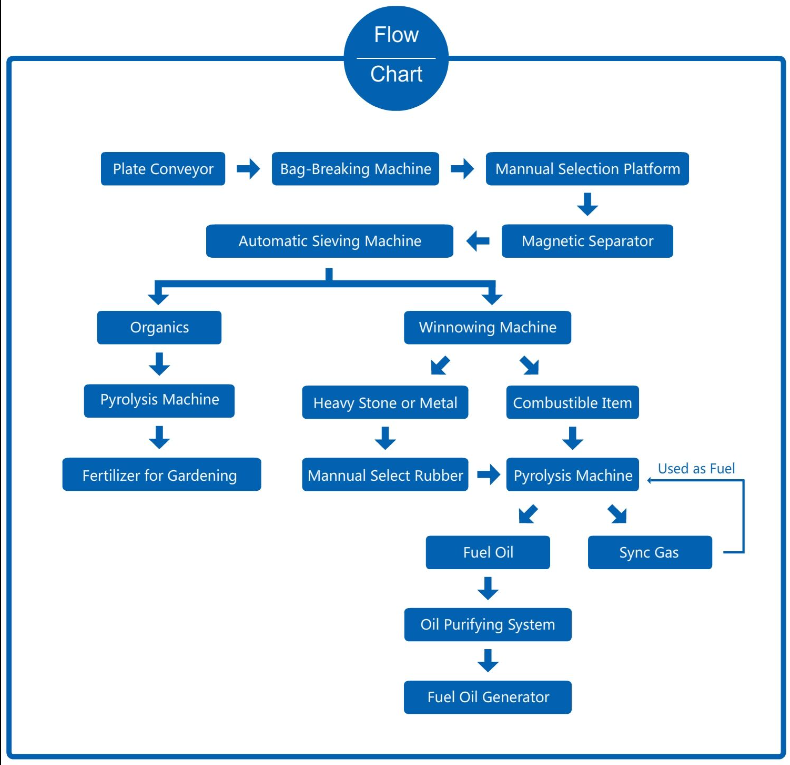(1) downstream leaching
The direction of flow of the immersed material and the leaching reagent is the same (Fig. 7-2). The leaching solution with higher content of the target component can be obtained by downstream leaching. The leaching reagent consumption is lower, but the leaching speed is slower, and the leaching time is longer. Higher leaching rate.

(2) cross-flow leaching
The immersed material is separately leached by several new leaching reagents. The leachate obtained by each leaching is uniformly sent to the subsequent operation (Fig. 7-3). The leaching rate of the cross-flow leaching is faster. The leaching time is shorter and the leaching string is higher. However, the volume of the leachate is large. The concentration of the remaining reagent in the leachate is high, so the reagent consumption is large, and the content of the target component in the leachate is low.

(3) Countercurrent leaching
The direction of movement of the immersion material and the leaching reagent is reversed, that is, the depleted material is contacted with the new leaching solution after several leaching, and the original immersed material is contacted with the leaching solution (Fig. 7-3). Countercurrent leaching can obtain a leachate with a higher content of the target component, and the remaining reagent in the leachate can be fully utilized. Therefore, the leaching agent consumes less, but the leaching speed is lower than the cross-flow rate, and more leaching stages are required to obtain a higher leaching rate.

The percolation tank can be immersed in a downstream, cross-flow or counter-current leaching process; the heap leaching and local leaching generally adopt a downstream circulation leaching process, and the continuous agitation leaching generally adopts a downstream leaching process. If cross-flow or countercurrent leaching is to be used, solid-liquid separation operations should be added between the stages. The agitation leaching of the intermittent operation is generally a downstream leaching, but a cross-flow or counter-current leaching process can also be used. It is only necessary to perform solid-liquid separation after each leaching, and the operation is complicated. There are fewer applications in production. The leaching leaching can directly obtain the clarified leachate, and the agitated leached pulp must be separated by solid-liquid separation to obtain a clarified leachate for subsequent processing or a thin ore slurry containing a small amount of ore.
Food Waste Pyrolysis Plant
Food waste is one of the most important garbage, including the production of food processing waste, family and school canteens and catering industries (kitchen) and edible residual (hogwash). Its main components are complex, is a mixture of oil, water, fruit peel, vegetables, rice, fish, meat, bones and waste plastics, tissues and etc.
China has a huge quantity of food waste, and increasing rapidly.
According to different application range and the actual situation, Shangqiu jinpeng industrial CO., Ltd manufacture Continuous Pyrolysis Plant to solve food waste issues. By this method, we can put off the kitchen garbage treatment thoroughly, make it into fuel oil, carbon black, sync gas(could use as fuel for Continuous Pyrolysis plant).

Flow-chat of continuous pyrolysis plant

Advantage of continuous pyrolysis plant
1. Large daily capacity of 30 MT raw materials, and can work 24 hours without any stop for 20 days;
2. Auto-loading, auto-discharging and oil coming out at the same time;
3. Only need fuel for the beginning 3-4 hours, then the sync gas generates itself is enough to support heating, saving fuel cost;
4. Low requirement on the raw materials, no need tiny granule, 10cm pieces acceptable for smooth running;
5. High efficiency condensers, more oil output, good quality oil, easy to clean.
6. Sync gas recycling system, fully burned after recycling and utilization, preventing pollution and saving fuel cost.
7. National patent smoke scrubber, can efficient remove the acid gas and dust of the smoke, environmental friendly to meet related national standards.
8. Easy to operate, need less manpower.
Technical Parameter of continuous pyrolysis plant
|
NO. |
ITEM |
Technical Parameter |
|
1 |
Suitable Raw Materials |
Oil Sludge |
|
2 |
Operating Mode |
Fully Continuous Operation |
|
3 |
Structure |
Horizontal Type Revolve |
|
4 |
Loading and discharging |
Fully automatic feeding and discharging under high temperature at same time |
|
5 |
Capacity(24h) |
20-30Mt |
|
6 |
Work Pressure |
Slightly Negative Pressure |
|
7 |
Reactor Rotational Speed |
1R/M |
|
8 |
Installation Power |
110kw |
|
9 |
Cooling Method |
Cycle water |
|
10 |
Type of Drive |
Sprocket Wheel |
|
11 |
Heating Method |
Hot Air |
|
12 |
Noise dB(A) |
≤85 |
|
13 |
Main Reactor Weight (MT) |
About 20Mt |
|
14 |
Total Weight(MT) |
About 45Mt |
|
15 |
Installation Space Required |
60m*20m |
|
16 |
Manpower |
2/shift |
|
17 |
Shipment |
5*40HC |
|
18 |
Delivery time |
≤70Days |
Food Waste Pyrolysis Plant
Food waste is one of the most important garbage, including the production of food processing waste, family and school canteens and catering industries (kitchen) and edible residual (hogwash). Its main components are complex, is a mixture of oil, water, fruit peel, vegetables, rice, fish, meat, bones and waste plastics, tissues and etc.
China has a huge quantity of food waste, and increasing rapidly.
According to different application range and the actual situation, Shangqiu jinpeng industrial CO., Ltd manufacture continuous pyrolysis plant to solve food waste issues. By this method, we can put off the kitchen garbage treatment thoroughly, make it into fuel oil, carbon black, sync gas(could use as fuel for continuous pyrolysis plant).

Flow-chat of continuous pyrolysis plant

Advantage of continuous pyrolysis plant
1. Large daily capacity of 30 MT raw materials, and can work 24 hours without any stop for 20 days;
2. Auto-loading, auto-discharging and oil coming out at the same time;
3. Only need fuel for the beginning 3-4 hours, then the sync gas generates itself is enough to support heating, saving fuel cost;
4. Low requirement on the raw materials, no need tiny granule, 10cm pieces acceptable for smooth running;
5. High efficiency condensers, more oil output, good quality oil, easy to clean.
6. Sync gas recycling system, fully burned after recycling and utilization, preventing pollution and saving fuel cost.
7. National patent smoke scrubber, can efficient remove the acid gas and dust of the smoke, environmental friendly to meet related national standards.
8. Easy to operate, need less manpower.
Technical Parameter of continuous pyrolysis plant
|
NO. |
ITEM |
Technical Parameter |
|
1 |
Suitable Raw Materials |
Oil Sludge |
|
2 |
Operating Mode |
Fully Continuous Operation |
|
3 |
Structure |
Horizontal Type Revolve |
|
4 |
Loading and discharging |
Fully automatic feeding and discharging under high temperature at same time |
|
5 |
Capacity(24h) |
20-30Mt |
|
6 |
Work Pressure |
Slightly Negative Pressure |
|
7 |
Reactor Rotational Speed |
1R/M |
|
8 |
Installation Power |
110kw |
|
9 |
Cooling Method |
Cycle water |
|
10 |
Type of Drive |
Sprocket Wheel |
|
11 |
Heating Method |
Hot Air |
|
12 |
Noise dB(A) |
≤85 |
|
13 |
Main Reactor Weight (MT) |
About 20Mt |
|
14 |
Total Weight(MT) |
About 45Mt |
|
15 |
Installation Space Required |
60m*20m |
|
16 |
Manpower |
2/shift |
|
17 |
Shipment |
5*40HC |
|
18 |
Delivery time |
≤70Days |
Food Waste Treatment Equipment
Food Waste Treatment Equipment,Kitchen Waste Processing,Food Waste Treatment
Shangqiu Jinpeng Industrial Co., Ltd. , https://www.recyclingthewaste.com